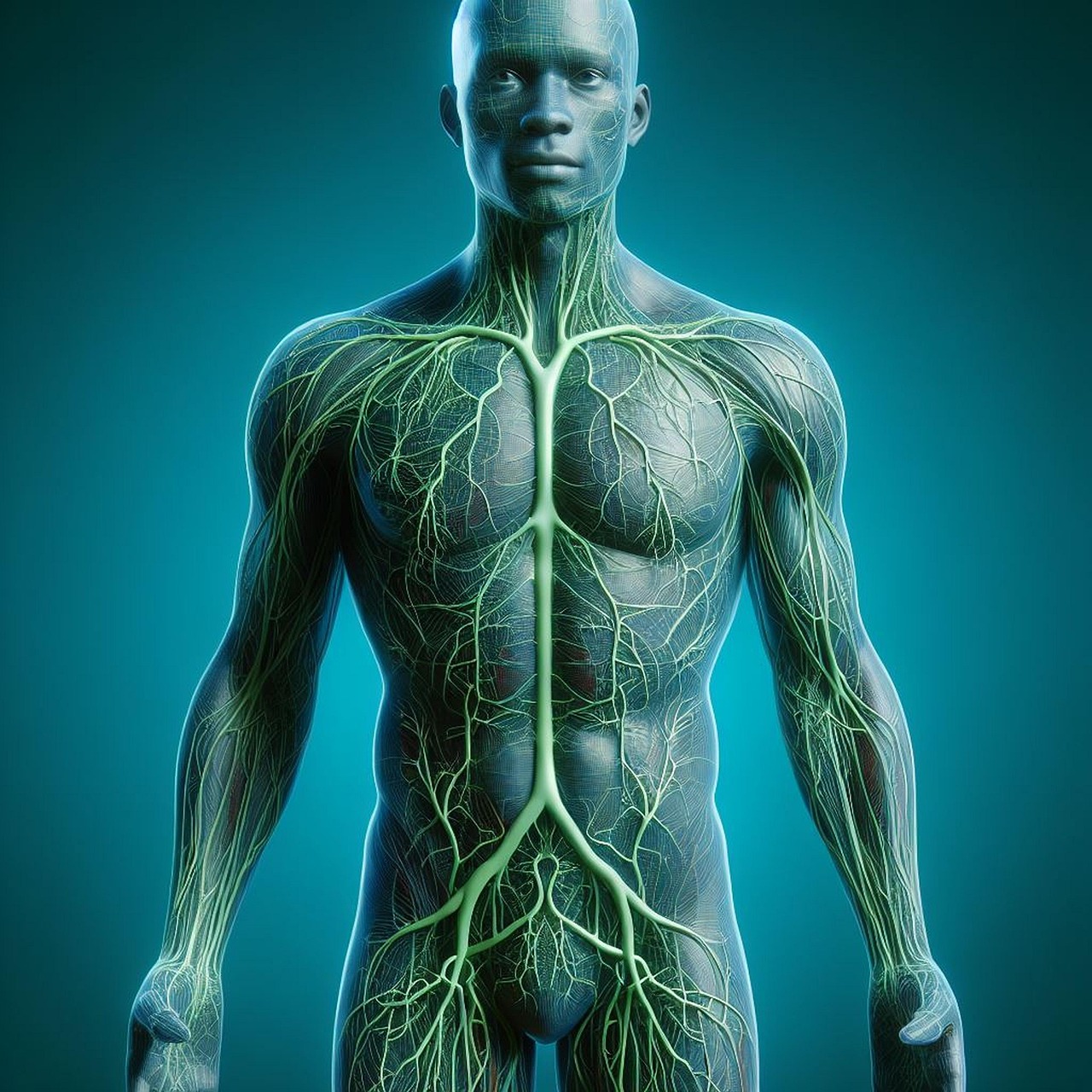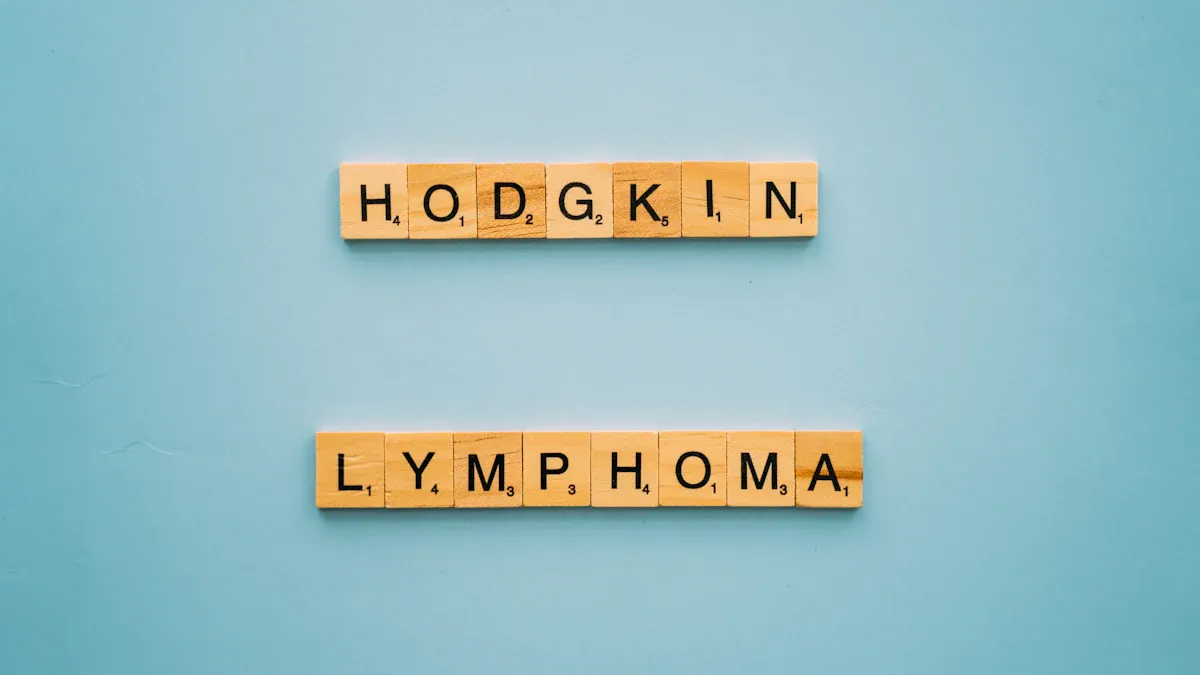What is Hodgkin's Lymphoma and Its Symptoms

Hodgkin's lymphoma is a cancer that targets your lymphatic system, a vital part of your immune defense. This disease causes lymphocytes, a type of white blood cell, to grow abnormally. These cells can form tumors and disrupt your body's ability to fight infections. Early detection plays a critical role in improving outcomes. For example, the five-year survival rate for localized Hodgkin's lymphoma is 93%, while regional cases have a 95% survival rate, as shown below:
SEER Stage | 5-Year Relative Survival Rate |
|---|---|
Localized | 93% |
Regional | 95% |
Recognizing symptoms early can make a significant difference in your treatment journey.
Key Takeaways
Hodgkin's lymphoma is a cancer that harms the lymph system. This system helps your body fight sickness.
Finding it early is very important. The survival rate for five years is 93% if it hasn’t spread and 95% if it spreads nearby.
Symptoms include swollen lymph nodes without pain, feeling very tired, fever, sweating at night, and losing weight without trying.
Things that increase risk are age, family history, weak immune systems, and some viruses like Epstein-Barr.
Treatments include chemotherapy, radiation, immunotherapy, and stem cell transplants. Each has good and bad effects.
What is Hodgkin's Lymphoma?

Definition and Overview
Hodgkin's lymphoma is a rare type of cancer that begins in your lymphatic system, which helps your body fight infections. It develops when B lymphocytes, a type of white blood cell, undergo genetic mutations. These mutations cause the cells to grow uncontrollably, forming tumors in the lymph nodes. Unlike non-Hodgkin lymphoma, Hodgkin's lymphoma is less common and often affects younger adults. Early diagnosis and treatment can significantly improve your chances of recovery.
One of the defining features of Hodgkin's lymphoma is the presence of Reed-Sternberg cells. These large, abnormal cells are not found in other types of lymphoma. Doctors often identify these cells through a biopsy, which involves examining a sample of lymph node tissue under a microscope.
Key Characteristics of Hodgkin's Lymphoma
Hodgkin's lymphoma has several unique characteristics that set it apart from other lymphomas:
Reed-Sternberg Cells: These are the hallmark of Hodgkin's lymphoma and help doctors distinguish it from non-Hodgkin lymphoma.
Inflammation in Biopsy Samples: Tissue samples from Hodgkin's lymphoma often show signs of inflammation, unlike non-Hodgkin lymphoma.
Age Group: This disease is more common in younger adults, particularly those between the ages of 15 and 40.
Diagnostic Markers: Specific proteins, such as CD15 and CD30, are commonly found in Hodgkin's lymphoma cells.
Understanding these characteristics can help you recognize the disease and seek medical advice promptly. Early detection plays a vital role in managing Hodgkin's lymphoma effectively.
Symptoms of Hodgkin's Lymphoma

Common Symptoms
Painless swelling of lymph nodes (neck, armpits, or groin)
One of the earliest signs of Hodgkin's lymphoma is painless swelling in the lymph nodes. These swollen nodes often appear in the neck, underarms, or groin. Unlike other conditions, the swelling does not cause pain, making it easy to overlook. Hodgkin's lymphoma typically begins in lymph nodes in the upper body, such as the neck or chest, which helps distinguish it from non-Hodgkin lymphoma.
Persistent fatigue
You may feel unusually tired even after resting. This fatigue can interfere with daily activities and worsen over time. It occurs because your body uses extra energy to fight the disease.
Fever and night sweats
Frequent fevers without an obvious cause, such as an infection, may indicate Hodgkin's lymphoma. Night sweats, where you wake up drenched, are another common symptom. These symptoms often occur together and can disrupt your sleep.
Unexplained weight loss
Losing weight without trying is another warning sign. This happens because the cancer affects your body's metabolism. If you notice a significant drop in weight, consult a doctor.
Less Common Symptoms
Itchy skin
Some people with Hodgkin's lymphoma experience persistent itching. This symptom may occur without a visible rash and can be frustrating to manage.
Pain in lymph nodes after alcohol consumption
A unique symptom of Hodgkin's lymphoma is pain in the lymph nodes after drinking alcohol. This pain is rare but can help differentiate it from other conditions.
Persistent cough or chest pain
If the disease spreads to lymph nodes in the chest, it may cause a persistent cough or chest pain. These symptoms occur because the swollen nodes press against the lungs or airways.
Note: While these symptoms may overlap with other illnesses, their persistence or combination should prompt you to seek medical advice. Early detection of Hodgkin's lymphoma improves treatment outcomes significantly.
Risk Factors for Hodgkin's Lymphoma
Age and Gender
Your age plays a significant role in determining your risk of Hodgkin's lymphoma. This disease most commonly affects young adults between the ages of 20 and 34. It also poses a higher risk for older adults over 65. The average age at diagnosis is 39. While Hodgkin's lymphoma can occur at any age, these two groups face the highest likelihood of developing it. Gender also influences risk. Men are slightly more likely to develop Hodgkin's lymphoma than women.
Family History
Having a family history of Hodgkin's lymphoma increases your chances of developing the disease. If your biological siblings or parents have had this condition, your risk becomes higher. This connection suggests that genetic factors may play a role in the disease's development. If you have a family history of Hodgkin's lymphoma, consider discussing your risk with a healthcare provider.
Weakened Immune System
A weakened immune system can make you more vulnerable to Hodgkin's lymphoma. Conditions like HIV/AIDS or autoimmune diseases can impair your immune defenses, increasing your risk. Organ transplant recipients who take immunosuppressive medications also face a higher likelihood of developing this cancer. A strong immune system helps your body fight off abnormal cell growth, so any compromise in its function can elevate your risk.
Tip: If you fall into any of these risk categories, regular check-ups and open communication with your doctor can help with early detection and prevention.
Certain Viral Infections (e.g., Epstein-Barr virus)
Certain viral infections can increase your risk of developing Hodgkin's lymphoma. One of the most notable is the Epstein-Barr virus (EBV), which causes infectious mononucleosis, commonly known as "mono." If you have had mono, your chances of developing Hodgkin's lymphoma may be slightly higher compared to someone who has not been infected.
EBV affects your immune system by infecting B lymphocytes, the same type of white blood cells involved in Hodgkin's lymphoma. This virus can cause genetic changes in these cells, leading to abnormal growth. While most people recover fully from EBV without complications, the virus can remain dormant in your body for years. In rare cases, it may contribute to the development of lymphoma.
Did You Know?
Studies show that EBV is present in about 40% of Hodgkin's lymphoma cases. However, having EBV does not mean you will definitely develop this cancer.
Other viruses, such as HIV, can also weaken your immune system and increase your risk. A compromised immune system struggles to control abnormal cell growth, making it easier for cancer to develop.
To reduce your risk, focus on maintaining a strong immune system. Practice good hygiene to avoid infections, and consider discussing your medical history with a healthcare provider. If you have had EBV or other viral infections, regular check-ups can help detect any early signs of Hodgkin's lymphoma.
Understanding the link between viral infections and Hodgkin's lymphoma empowers you to take proactive steps for your health. Early detection and prevention remain your best tools for managing risks effectively.
How is Hodgkin's Lymphoma Diagnosed?
Medical History and Physical Exam
Diagnosing Hodgkin's lymphoma begins with a detailed medical history and physical examination. Your doctor will ask about your symptoms, such as swollen lymph nodes, fatigue, or unexplained weight loss. They will also inquire about risk factors, including family history or previous infections like the Epstein-Barr virus.
During the physical exam, your doctor will carefully check for swollen lymph nodes in areas like your neck, armpits, and groin. They may also examine your spleen and liver for signs of enlargement. If the findings suggest Hodgkin's lymphoma, further tests will be recommended to confirm the diagnosis.
Tip: Keep track of your symptoms and share them with your doctor. This information can help guide the diagnostic process.
Diagnostic Tests
Blood tests
Blood tests play a crucial role in the diagnostic process. These tests can reveal signs of infection, anemia, or other abnormalities that may indicate Hodgkin's lymphoma. A blood chemistry study measures substances in your blood to assess organ function and detect disease markers. While blood tests alone cannot confirm Hodgkin's lymphoma, they provide valuable clues for further investigation.
Imaging tests (e.g., CT or PET scans)
Imaging tests help doctors visualize the extent of the disease. A CT scan provides detailed images of your lymph nodes and other organs, helping identify areas affected by lymphoma. PET scans go a step further by detecting active cancer cells. These scans can reveal small lymphoma spots that might not appear on CT scans. PET scans also monitor treatment effectiveness by showing changes in lymph node activity.
Did You Know? PET scans are often used after treatment to distinguish between scar tissue and active cancer.
Lymph node biopsy
A lymph node biopsy is the definitive test for diagnosing Hodgkin's lymphoma. During this procedure, a surgeon removes an enlarged lymph node, usually through an excisional biopsy. The entire lymph node is then examined under a microscope to identify Reed-Sternberg cells, which confirm the presence of Hodgkin's lymphoma. In some cases, additional biopsies of other tissues, like the liver, may be necessary to determine the disease's spread.
This combination of tests ensures an accurate diagnosis, allowing your doctor to develop an effective treatment plan tailored to your needs.
Treatment Options for Hodgkin's Lymphoma
Chemotherapy
Chemotherapy is one of the most common treatments for Hodgkin's lymphoma. It uses powerful drugs to kill cancer cells or stop them from growing. This treatment is especially effective for advanced stages of the disease. However, the success rates vary.
Cure rates for advanced Hodgkin's lymphoma range between 30% and 50%.
Chemotherapy significantly improves survival rates and helps manage symptoms in low-grade cases.
While chemotherapy is effective, it often comes with side effects. You may experience:
Digestive issues like bloating, constipation, or diarrhea.
Changes in appetite or taste.
Extreme fatigue or "chemo brain," which affects memory and focus.
Hair loss, rashes, or itchiness.
These side effects can vary in severity. Discussing them with your doctor can help you manage them better during treatment.
Radiation Therapy
Radiation therapy uses high-energy rays to target and destroy cancer cells. It is often combined with chemotherapy to treat Hodgkin's lymphoma. This approach works well for localized cases, where the cancer is confined to specific lymph nodes.
However, radiation therapy carries long-term risks. These include:
Long-term Risk | Description |
|---|---|
Hypothyroidism | Reduced thyroid hormone production, requiring lifelong medication. |
Heart Disease | Increased risk of heart problems, especially after chest radiation. |
Stroke | Damage to neck blood vessels, raising stroke risk. |
Lung Damage | Breathing issues caused by radiation or chemotherapy drugs. |
Second Cancers | Higher likelihood of developing another type of cancer later in life. |
Fertility Issues | Potential loss of fertility due to treatment effects. |
Understanding these risks helps you make informed decisions about your treatment plan.
Immunotherapy
Immunotherapy boosts your immune system to fight Hodgkin's lymphoma. It uses drugs that target specific proteins on cancer cells, making it easier for your immune system to destroy them. This treatment is often used when chemotherapy or radiation therapy is not effective.
Immunotherapy has fewer side effects compared to chemotherapy and radiation. However, it may still cause fatigue, fever, or skin reactions. Your doctor will monitor your response to ensure the treatment works effectively.
By exploring these treatment options, you can work with your healthcare team to find the best approach for your condition. Early and personalized treatment increases your chances of recovery.
Stem Cell Transplant
A stem cell transplant offers a powerful treatment option for Hodgkin's lymphoma, especially when other therapies fail or the disease returns. This procedure replaces damaged or destroyed bone marrow with healthy stem cells, which can regenerate your blood and immune system.
Types of Stem Cell Transplants
There are two main types of stem cell transplants used for Hodgkin's lymphoma:
Autologous Stem Cell Transplant: In this method, doctors collect your own healthy stem cells before treatment. After high-dose chemotherapy or radiation therapy destroys the cancerous cells, your stored stem cells are returned to your body. This approach reduces the risk of rejection since the cells come from you.
Allogeneic Stem Cell Transplant: This method uses stem cells from a donor, often a close relative or a matched unrelated donor. It is typically used when your own stem cells are not viable. However, this type carries a higher risk of complications, such as graft-versus-host disease (GVHD), where the donor cells attack your body.
What to Expect During the Procedure
The process involves several steps:
Preparation: You undergo high-dose chemotherapy or radiation to eliminate cancer cells and suppress your immune system.
Stem Cell Infusion: Doctors infuse the collected stem cells into your bloodstream through an IV. These cells travel to your bone marrow and begin producing healthy blood cells.
Recovery: Your immune system takes time to rebuild. You may need to stay in a hospital or a sterile environment to avoid infections during this period.
Note: Recovery can take weeks or months. You might experience side effects like fatigue, nausea, or an increased risk of infections.
Stem cell transplants offer hope for long-term remission. Discussing this option with your doctor can help you decide if it’s the right choice for your treatment plan.
Early detection of Hodgkin's lymphoma can dramatically improve survival rates. For example, localized cases have a 93% five-year survival rate, while regional cases reach 95%. Regular follow-ups after treatment are essential. You should attend appointments every 3 to 6 months, monitor for side effects, and maintain a healthy lifestyle. A diagnosis can be emotionally challenging, often leading to anxiety or depression. Seeking support from healthcare professionals and loved ones can help you navigate this journey. Remember, Hodgkin's lymphoma is treatable, and early action offers hope for recovery.
FAQ
What is the difference between Hodgkin's lymphoma and non-Hodgkin's lymphoma?
Hodgkin's lymphoma features Reed-Sternberg cells, which are absent in non-Hodgkin's lymphoma. Hodgkin's lymphoma often starts in the upper body, while non-Hodgkin's can develop anywhere. Treatment approaches and survival rates also differ between the two types.
Can Hodgkin's lymphoma be cured?
Yes, Hodgkin's lymphoma is highly treatable, especially when detected early. Many patients achieve long-term remission or complete recovery with chemotherapy, radiation, or stem cell transplants. Early diagnosis improves your chances of a cure.
How long does treatment for Hodgkin's lymphoma take?
Treatment duration depends on the stage and type of therapy. Chemotherapy typically lasts 4-6 months, while radiation therapy may take several weeks. Your doctor will create a personalized plan based on your condition.
Is Hodgkin's lymphoma hereditary?
A family history of Hodgkin's lymphoma slightly increases your risk. However, most cases occur without a genetic link. If you have concerns about your family history, consult a healthcare provider for guidance.
What lifestyle changes can help during treatment?
Focus on a balanced diet, regular light exercise, and adequate rest. Avoid infections by practicing good hygiene. Stay hydrated and manage stress through relaxation techniques. Always follow your doctor’s advice for the best outcomes.
Tip: Keep a journal to track symptoms and side effects. Share this information with your doctor to adjust your treatment plan effectively.
---
ℹ️ Explore more: Read our Comprehensive Guide to All Known Cancer Types for symptoms, causes, and treatments.
See Also
Understanding Follicular Lymphoma: Key Symptoms to Recognize
Burkitt's Lymphoma Explained: Recognizing Its Symptoms
Acute Lymphoblastic Leukemia: Symptoms You Should Know
Exploring Cutaneous T-Cell Lymphoma and Its Symptoms
Endometrial Cancer: Understanding Symptoms and Warning Signs
